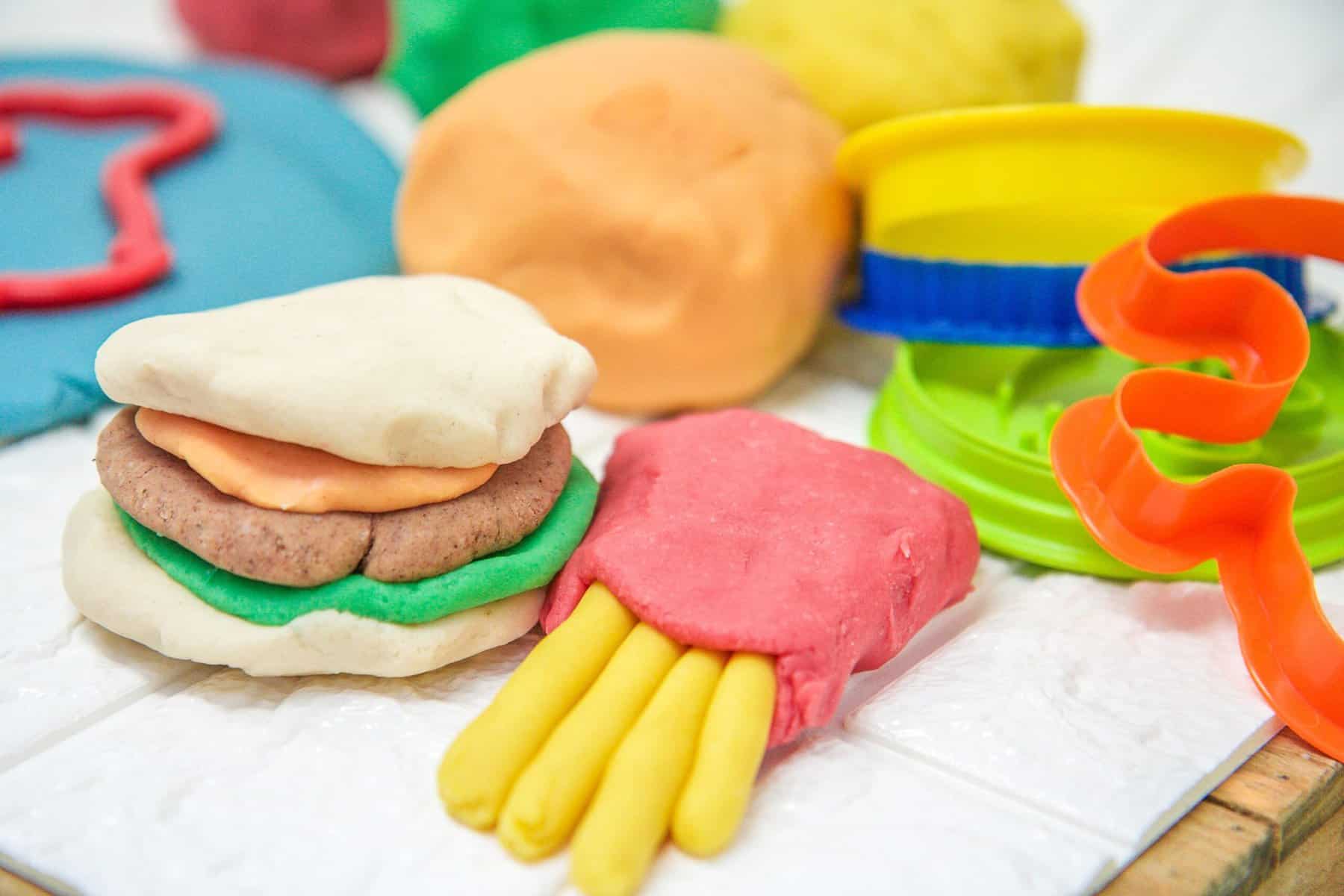Ultimate Guide to Play-Doh Fun: Creative Projects for Kids
Welcome, creative parents and delightful doers! Are you ready to dive into the colorful universe of Play-Doh making? This ultimate guide is bursting with fabulous ideas, tips, and tricks to help you and your little ones mold a world of fun!
For generations, Play-Doh has been a cornerstone of childhood entertainment. Not only does it spark imagination, but it actively engages children in sensory play, boosts fine motor skills, and encourages learning through art and creation. So, don your aprons and get ready to knead into a dough-filled adventure!
Why Choose Play-Doh for Creative Play?
Before we roll up our sleeves and start our Play-Doh journey, let’s take a moment to appreciate why Play-Doh is such an ideal companion for childhood creativity:
- Educational: Play-Doh activities promote hands-on learning, from color recognition and mixing to understanding shapes and structures.
- Motor Skills Development: Squishing, rolling, and shaping the dough enhances fine motor skills and hand-eye coordination.
- Sensory Experience: The texture and malleability of Play-Doh provide a unique sensory experience that is both calming and engaging for kids.
- Limitless Possibilities: There is no right or wrong way to play with Play-Doh! The sky’s the limit when it comes to what your child can create.
Play-Doh Essentials: What You Need to Get Started
Gearing up for your Play-Doh making session is part of the fun! Here are some essentials you’ll want to have on hand:
- Play-Doh: Purchase a variety of colors or make your own with simple, non-toxic ingredients (recipe ahead!)
- Tools: Basic tools like rolling pins, cookie cutters, and molds help shape and cut the dough into fantastic creations.
- Protective Covering: Lay down a plastic sheet or wax paper to make cleanup a breeze.
- Creative Add-ons: Incorporate items like plastic knives, straws, and decorative elements to beautify and add texture to the projects.
Homemade Play-Doh Recipes: Safe, Easy, and Fun!
Fancy making your own Play-Doh at home? It’s a great way to ensure the ingredients are safe and allows for customization of colors and scents. Plus, it’s an entertaining activity to do with your kids! Here’s a basic recipe to create your DIY Play-Doh:
Simple Homemade Play-Doh Recipe
- 2 cups all-purpose flour
- 1/2 cup salt
- 2 tablespoons cream of tartar
- 2 tablespoons vegetable oil
- 1 1/2 cups boiling water
- Food coloring
Mix the dry ingredients together in a large bowl. Stir in the vegetable oil and boiling water (adult supervision required). Add a few drops of your desired food coloring. Knead until smooth, then let it cool before handing it over to the kids. Voila! Homemade Play-Doh magic!
Play-Doh Project Ideas to Spark Creativity
Now that we have our Play-Doh ready, let’s explore some exciting project ideas to get those creative juices flowing:
1. Undersea Adventure
Create an underwater wonderland using various shades of blue and green Play-Doh. Shape sea creatures like fish, octopuses, and starfish. Use cookie cutters for simpler shapes and add details with a plastic knife for an imaginative ocean scene.
2. DIY Play-Doh Monsters
Let your child’s imagination run wild by making silly monsters. Provide them with an assortment of colors and encourage them to add zany features such as extra eyes, wacky mouths, or funky hair using add-ons like pipe cleaners or beads.
Following these ideas and tips, the possibilities for Play-Doh creations are truly endless. Whether you’re building a fairy-tale castle, designing a fleet of race cars, or crafting a miniature garden, the key is to have fun and let imagination lead the way. Keep reading for more fabulous Play-Doh adventures and get ready for hours of fun and creative play with your kids!

5 Things Parents Should Know in Preparing for Play-Doh Making Things
As you embark on this doughy journey, here are five essential things every parent should know to make the most out of the Play-Doh experience:
1. Set the Stage for Messy Play
Play-Doh can be messy (that’s part of the fun!), so prepare an area where kids can explore without worrying parents. Consider a designated Play-Doh table or a space on the floor covered with an old tablecloth, newspapers, or a mat. Having wipes and a small basin of water nearby can quickly deal with sticky hands and minor spills.
2. Embrace Imperfection and Encourage Imagination
Your little ones might not craft a perfect replica of their favorite animals or characters on the first try, and that’s absolutely alright! Emphasize the joy of the process rather than the end result. This way, children feel free to use their imagination and develop their artistic abilities without the pressure of perfection.
3. Play-Doh is Not Just for Kids
Join in on the fun! Play-Doh can be a great stress reliever for adults, too. Plus, playing alongside your children strengthens bonds, builds memories, and models creative thinking. So, grab that dough and start creating alongside your kiddos—it’s amazing how much their creativity can also inspire you!
4. Teach Responsibility Through Play
While Play-Doh is about creative expression, it’s also an excellent opportunity to teach responsibility. Showing kids how to take care of their Play-Doh by storing it properly to avoid drying out, cleaning up tools after use, and respecting boundaries during play can instill valuable life skills.
5. Safety and Allergy Considerations
Homemade or store-bought, it’s important to consider safety and allergies. Ensure the Play-Doh and included ingredients are non-toxic, especially if you have little ones who might be tempted to taste-test their creations. Also, when making dough at home, be mindful of any food allergies your children may have and adjust recipes accordingly.
More Play-Doh Project Insights and Tips
Mixing and Making Colors
Understanding color theory can be an exciting part of Play-Doh play. Teach kids how to mix primary colors to make secondary ones, and how combining different amounts can result in a variety of shades. This not only enhances their artistic knowledge but also introduces basic science concepts.
Creativity Beyond the Dough
Play-Doh doesn’t have to be just about what they can make with the dough alone; it can also involve creating scenes or stories. Encouraging kids to tell a story with their Play-Doh creations fosters narrative skills and may even kickstart a love for storytelling and writing.
Caring for Play-Doh
Proper care of Play-Doh is crucial. After playtime, ensure that Play-Doh is stored in air-tight containers to maintain its softness. If the dough begins to dry out, you can sometimes revive it with a few drops of water kneaded in carefully.
Play-Doh as a Teaching Tool
Don’t forget the educational power of Play-Doh. Use it for counting activities, learning the alphabet, or even basic math, such as forming shapes and comparing sizes. It’s a tactile and visual way to make learning stick.
Incorporate Seasonal and Holiday Themes
Keep Play-Doh activities fresh by incorporating themes based on seasons or holidays. Crafting pumpkins during Halloween, ornaments around Christmas, or flowers in spring can make Play-Doh time simultaneously a festive and educational occasion.
With these insights, it’s undeniable that Play-Doh offers much more than just playtime—it’s an opportunity to sculpt young minds while providing delightful parenting moments. So go ahead, embrace the squishy, colorful, and joyous world of Play-Doh!
See more great Things to Do with Kids in New Zealand here. For more information see here
Disclaimer
The articles available via our website provide general information only and we strongly urge readers to exercise caution and conduct their own thorough research and fact-checking. The information presented should not be taken as absolute truth, and, to the maximum extent permitted by law, we will not be held liable for any inaccuracies or errors in the content. It is essential for individuals to independently verify and validate the information before making any decisions or taking any actions based on the articles.




